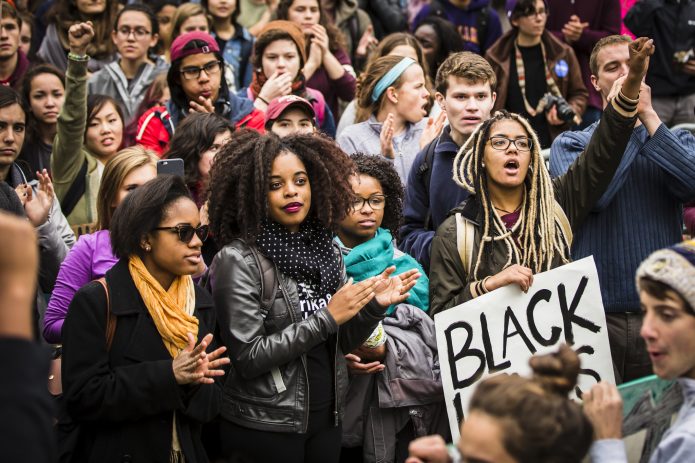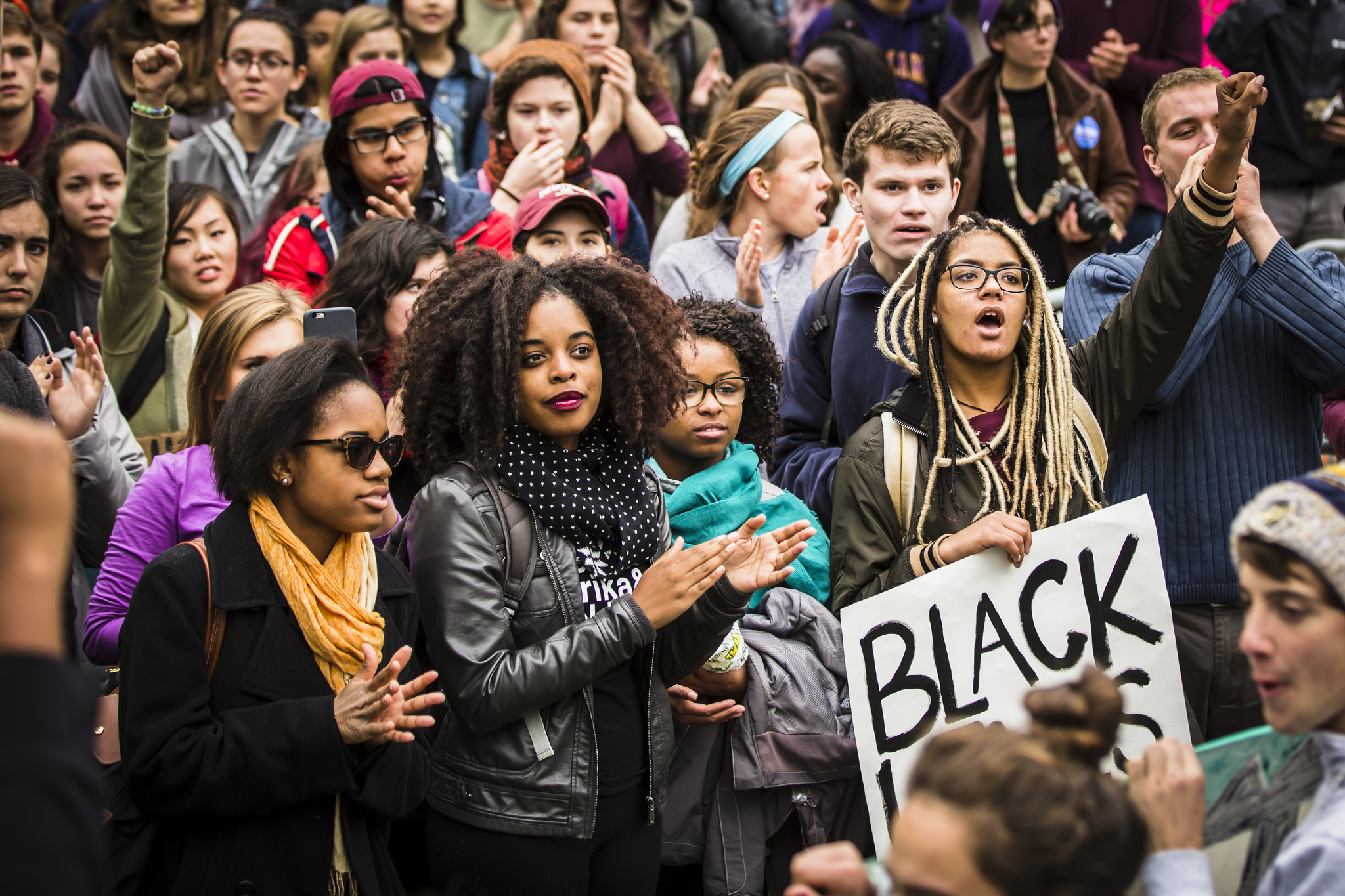
Johnny Silvercloud / Flickr
As Women’s History Month comes to an end, we at the Racial Wealth Divide Initiative think it is important to reflect upon how racial economic inequality intersects with gender economic inequality. Overall, women earn lower wages and experience higher levels of poverty than men. This holds for Black and Latina women, who also earn lower wages and experience higher poverty rates than White and Asian women. Most women of color face a double disparity: having lower socio-economic outcomes than men, compounded by affiliation with a racial or ethnic group that — whether male or female — has much lower socio-economic indicators than their White counterparts.
Education is one area where women in all major racial and ethnic groups outperform men. Whether Latina, Black, White or Asian American, women’s college graduation rates are between five to 10 percentage points higher than men’s. However, superior education outcomes for women do not lead to superior incomes. Even with a higher likelihood of college education, the median income of all women is only 83 percent of that earned by men.
This gendered income inequality varies within different racial groups. Asian American and White women, who are more likely to come from higher income backgrounds, earn at about 80 percent of Asian American and White men’s income. Latina and African American women, who are more likely to come from lower income communities, make about 90 percent of what Latino and Black men make.
Similarly, a 2015 study by Mariko Chang reveals that wealth inequality between single men and women varies between races. While single Black women own only $100 less in wealth than single Black men, disappointingly, the median wealth for single Black women is a mere $200 while the median wealth of single Black men is only $300. Single Latina women hold only $100 in median wealth, $850 lower than single Latino men. Whites have a gender wealth disparity of over $13,000 with a median wealth of $15,640 for single women and $28,900 for single men. There was no gender wealth data for single Asian Americans in the cited study.
Looking at this income and wealth data together, there are three important takeaways:
- While women of all races and ethnicities have higher educational levels and suffer lower pay than men overall, their socio-economic status is much closer to men within their racial or ethnic group than with women across racial or ethnic groups.
- Ironically, single women from the most economically secure communities face the greatest gender disparities compared to single men in their same demographic group. Not only do they earn a lower share of single men’s income, but the magnitude of wealth inequality is higher as well.
- Although the magnitude of income and wealth inequality between single Black and Latino men and women is relatively small, they sadly earn low income and hold almost zero wealth regardless of gender.
The share of women of color in America’s female population and the workforce is growing. It is increasingly evident that to tackle gender inequality, we also have to tackle the racial economic divide that is so deeply ingrained in this country.
This piece was originally posted at Prosperity Now.
